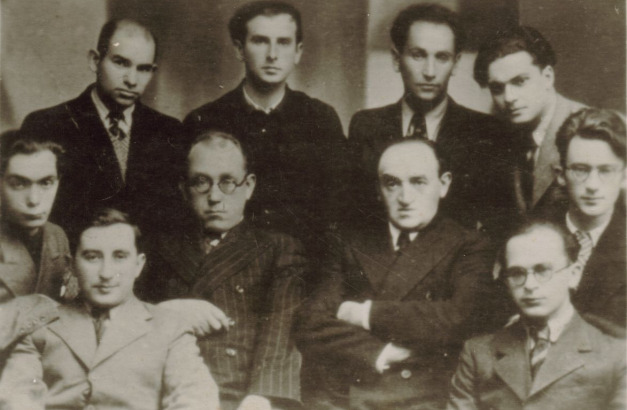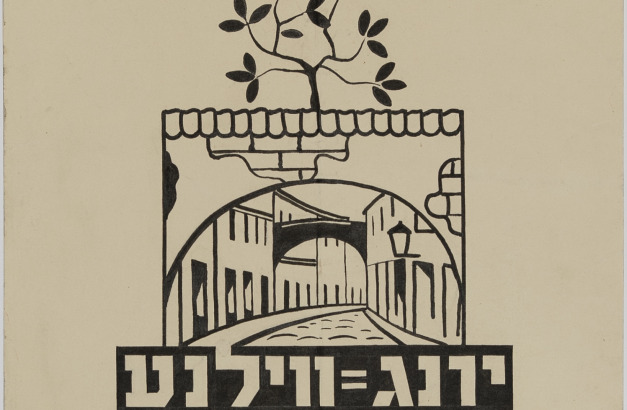Jung Vilne (Jaunasis Vilnius, 1929–1941) – jaunųjų žydų rašytojų ir dailininkų avangardo sambūris Vilniuje.
Sambūrio pirmoji kolektyvinė publikacija paskelbta 1929 m. Vilniaus dienraštyje Vilner tog (iš jid. Vilniaus diena). Sambūrio ištakos sietinos su poetų ir žurnalistų Šloimės Beilio ir Šimšono Kahano vardais. Menininkų ir rašytojų kūryboje ryški modernizmo, ypač ekspresionizmo, taip pat realizmo, sumišusio su natūralizmu, estetika.
Kūrėjai akcentuoja socialinę bei politinę problematiką, vyrauja katastrofizmo motyvas. Sambūrio sudėtis nuolat kito, kol 1934 m. nusistovėjo ir jos branduoliu tapo rašytojai Leizeris Volfas, Šimšonas Kahanas, Moišė Levinas, Elchananas Vogleris, Chaimas Gradė, Šmerelis Kačerginskis, Perecas Miranskis, Hadasa Rubin, Avromas Suckeveris ir dailininkai Bencionas Michtomas, Rachelė Suckever, Šeina Efron. Išleisti trys Jung Vilne almanachai: 1934, 1935, 1936, o sambūrio rašytojai atskirai publikavo savo kūrybos rinkinius, kuriuos dažniausiai iliustravo sambūrio narys dailininkas B. Michtomas. Trys sambūrio nariai – Š. Kačerginskis, A. Suckeveris ir R. Suckever – kūrybinę veiklą plėtojo Vilniaus gete.
Holokaustą išgyveno A. Suckeveris, Ch. Gradė, P. Miranskis, Š. Kačerginskis, Š. Efron, R. Chvolesas. Du iš jų tapo jidiš kalba kūrusiais pasaulinio garso rašytojais: A. Suckeveris 1970 m. nominuotas Nobelio premijai gauti, o Ch. Gradė 1983 m. tapo Pulitzerio premijos grožinės literatūros kategorijoje finalininku.
Jung Vilne / Jung Vilne
Jung Vilne (Young Vilna, 1929-1941) was an avant-garde group of young Jewish writers and artists in Vilnius.
The first collective publication of the group was published in 1929 in the daily, Vilner tog (Yiddish: Vilnius Day). The origins of the group can be traced back to the poets and journalists, Shlomo Beilis and Shimshon Kahan. The aesthetics of Modernism, especially Expressionism, as well as Realism combined with Naturalism, were evident in the work of Jung Vilne artists and writers. The group emphasized social and political issues, and the motif of catastrophe prevailed. The composition of the group was constantly changing until, in 1934, the writers Leyzer Volf, Shimshon Kahan, Moyshe Levin, Elkhonen Vogler, Chaim Grade, Shmerke Kaczerginski, Perets Miranski, Hadasah Rubin and Avrom Sutzkever and the painters Bencion Michtom, Rokhl Sutzkever and Sheyne Efron established its core.
Three Jung Vilne almanacs were published: in 1934, 1935, and 1936. The writers of the group published separate collections of their work, mostly illustrated by the member artist Michtom. Three members of the group: Kaczerginski, Avrom Sutzkever and Rokhl Sutzkever, continued to create in the Vilna Ghetto. Avrom Sutzkever, Grade, Miranski, Kaczerginski, Efron and Chwoles survived the Holocaust. Two of them became world-renowned Yiddish writers: Avrom Sutzkever was nominated for the Nobel Prize in 1970, and Chaim Grade was a finalist for the Pulitzer Prize in fiction in 1983.

